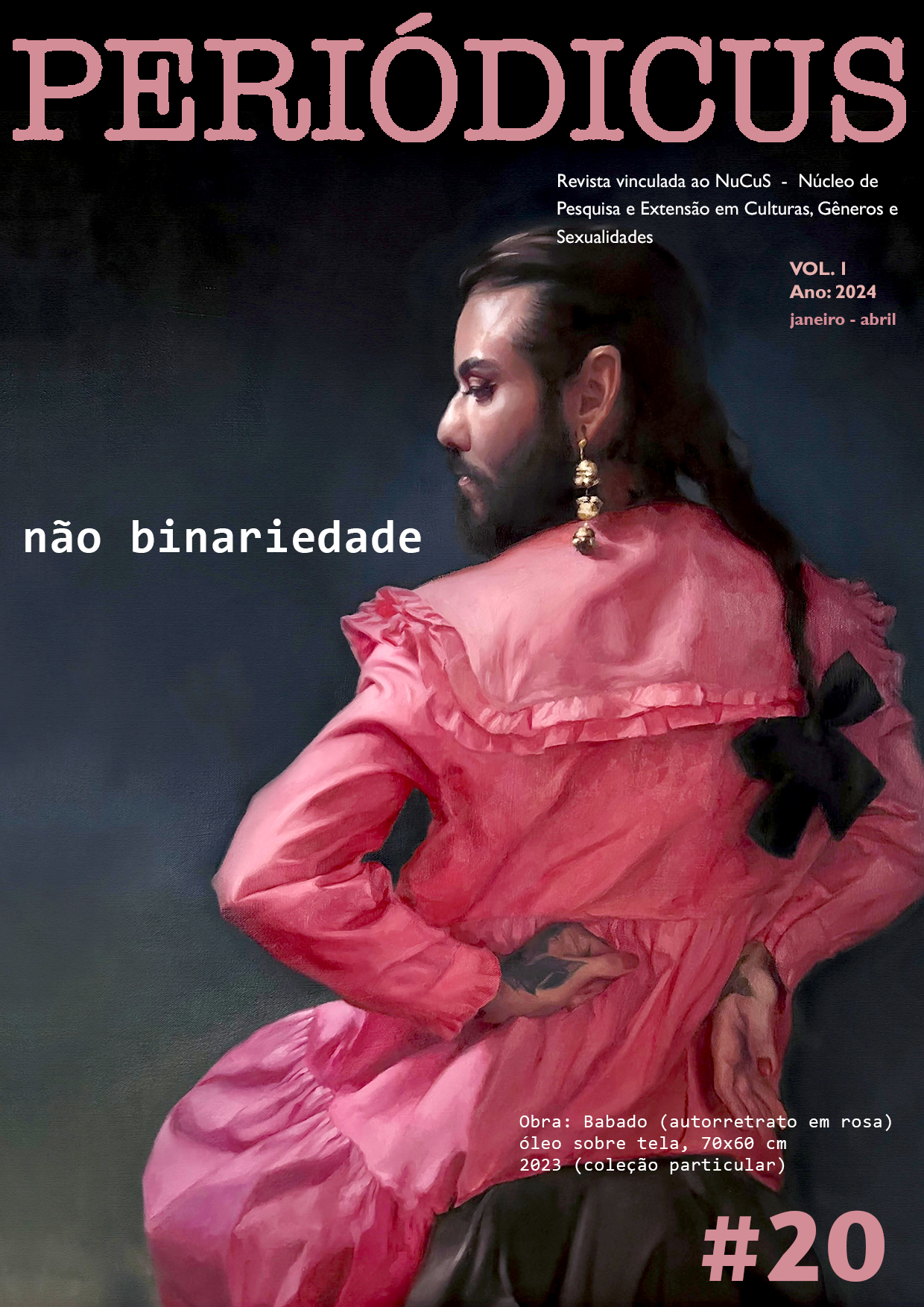Taylor Mason and possibilities of representation
the introduction of non-binarity in Billions
DOI:
https://doi.org/10.9771/peri.v1i20.52703Abstract
The non-binary gender expression refers to transgender people who do not identify with the gender assigned at birth or as part of the male and female categories, partially or fully, being an umbrella term that includes other gender categories. We consider the media as vehicles for (re)production of social representations about the LGBTQIA+ population and that the first non-binary character in mainstream media was Taylor Mason, from the Billions series. From the perspective of Critical Social Psychology, Theory of Social Representations, Gender Studies and Intersectional Feminism, we aim to explore the relationships between the characters in view of Taylor's introduction. Specifically, to analyze how the gender narrative takes place in the series. We conclude that Billions presents possibilities of anchoring and objectification for the construction of representations about non-binarity and that it is treated with spontaneity, giving importance to the character beyond gender issues.
Downloads
Downloads
Published
How to Cite
Issue
Section
License
Copyright (c) 2024 Natália Ferreira Schreiner, Adriane Roso, Larissa Goya Pierry, Daniela Porto Giacomelli

This work is licensed under a Creative Commons Attribution-NonCommercial 4.0 International License.
Autores que publicam nesta revista concordam com os seguintes termos:
Autores mantêm os direitos autorais e concedem à revista o direito de primeira publicação, com o trabalho simultaneamente licenciado sob Licença Creative Commons Attribution Noncommercial que permite o compartilhamento do trabalho com reconhecimento da autoria e publicação inicial nesta revista, sendo vedado o uso com fins comerciais.
Autores têm autorização para assumir contratos adicionais separadamente, para distribuição não-exclusiva da versão do trabalho publicada nesta revista (ex.: publicar em repositório institucional ou como capítulo de livro), com reconhecimento de autoria e publicação inicial nesta revista.
Autores têm permissão e são estimulados a publicar e distribuir seu trabalho online (ex.: em repositórios institucionais ou na sua página pessoal) a qualquer ponto antes ou durante o processo editorial, já que isso pode gerar alterações produtivas, bem como aumentar o impacto e a citação do trabalho publicado (Veja O Efeito do Acesso Livre).







